This year marks the 150th anniversary of public education in Victoria, and a chance to reflect on our long-held belief that every child deserves a high-quality education, regardless of their background.1

When Victoria became an independent colony in 1851, its government inherited a dual system of publicly funded schools from New South Wales. The Denominational School Board administered the funding and regulation of church-based schools, and the National School Board oversaw government-funded secular schools.
Some children went to independent schools, others were educated at home with tutors. For the poorest families education was a luxury many could not afford. This led to the establishment of what were known as ‘ragged schools’.

Schools were established only when a community had a minimum number of students and could raise a portion of the school building costs, with the government assisting with the provision of land, administering the construction of a school building, and covering the teacher’s salary.2
This period also saw the establishment of private schools known as ‘grammar schools’, which emulated the English public school model, for example Geelong Grammar School (est.1855), and Melbourne Grammar School (1858).
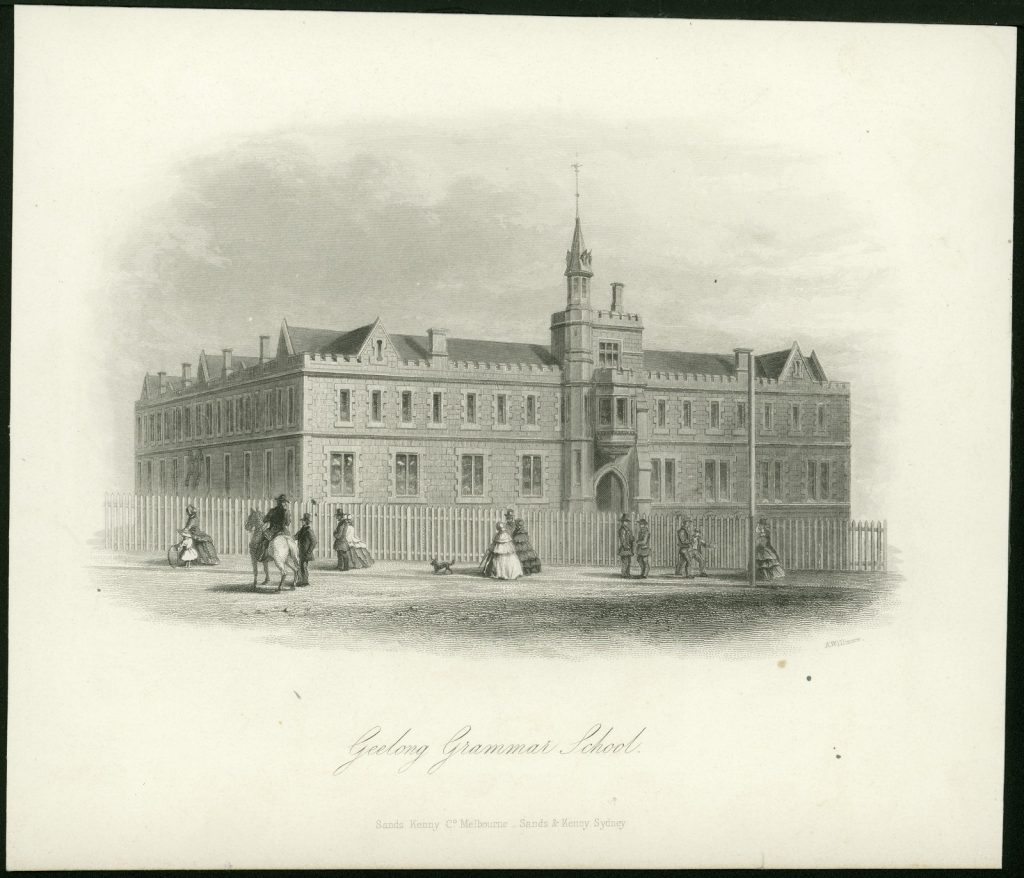
The Board of Education was formed in 1862, at which point the Denominational School Board dissolved, and a system of common and rural schools was established. When the Education Act (Vic) was passed in 1872, Victoria was the first of the Australian colonies to set up a central public school system based on the principles of free, secular and compulsory education.
All children aged 6-15 years were now required to attend school ‘for a period of sixty days in each half year’, unless they had a reasonable excuse.3 The Department of Education was established in 1873, led by Victoria’s first Minister of Public Instruction, James Wilberforce Stephen.
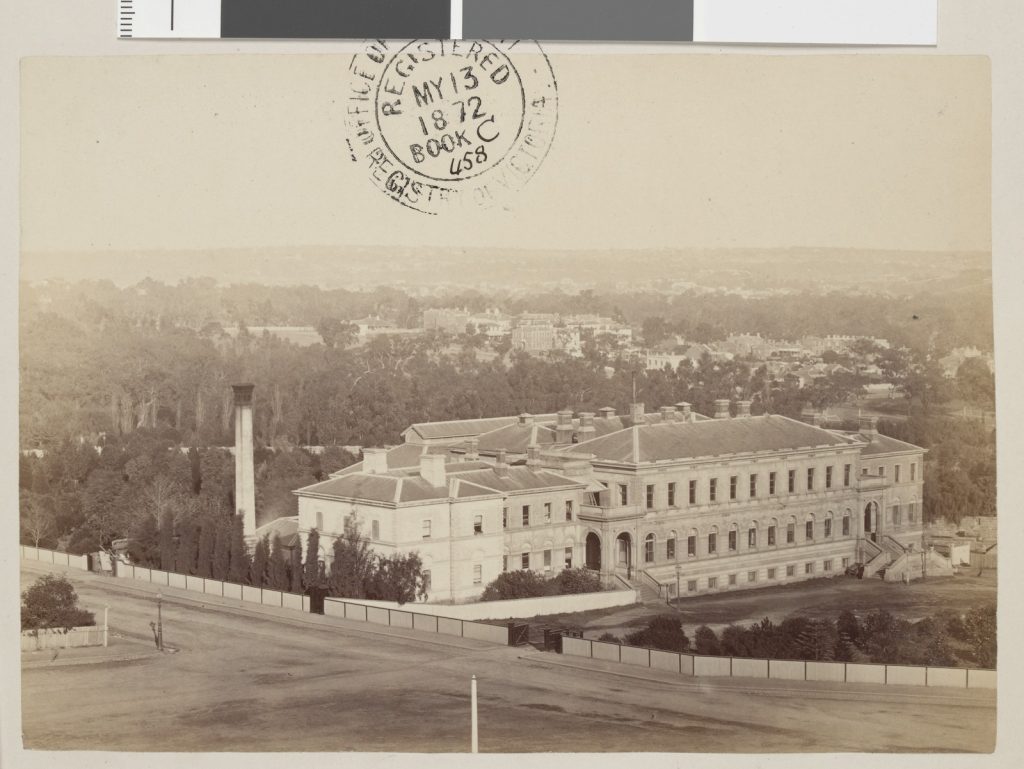
The Education Act (Vic) laid out the subjects that children would be taught, including the ‘Three Rs’ – reading, writing and arithmetic. Geography was also considered an important skill, along with drills and gymnastics, and sewing and needlework ‘in addition for Girls’. When the children had successfully learnt these skills they were considered ‘sufficiently educated’.
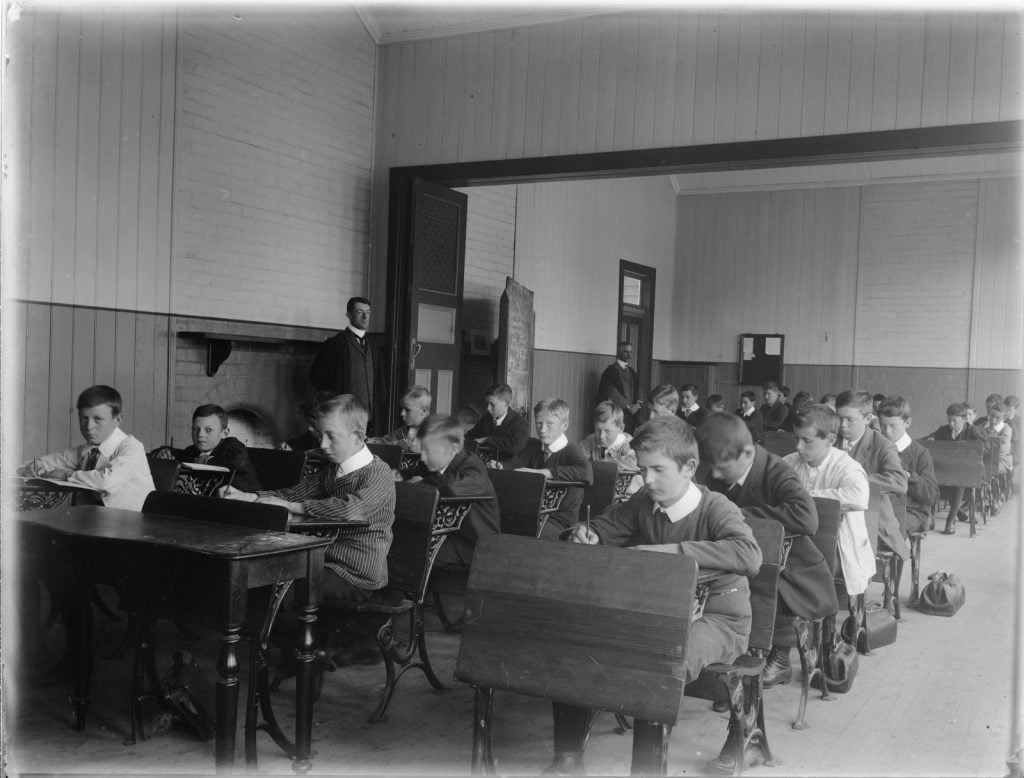
Did you know?
Victoria’s oldest school – which is still in operation today – is Bacchus Marsh Primary School. It was built on the traditional Country of the Wada Wurrung people and opened in 1850. 4

The term ‘secondary school’ as a stage of tuition following primary schooling has quite recent origins.
While tuition of a secondary standard had always been available in some independent schools5, the first state secondary school, the Melbourne Continuation School (later renamed Melbourne High School), wasn’t opened until 1905.6
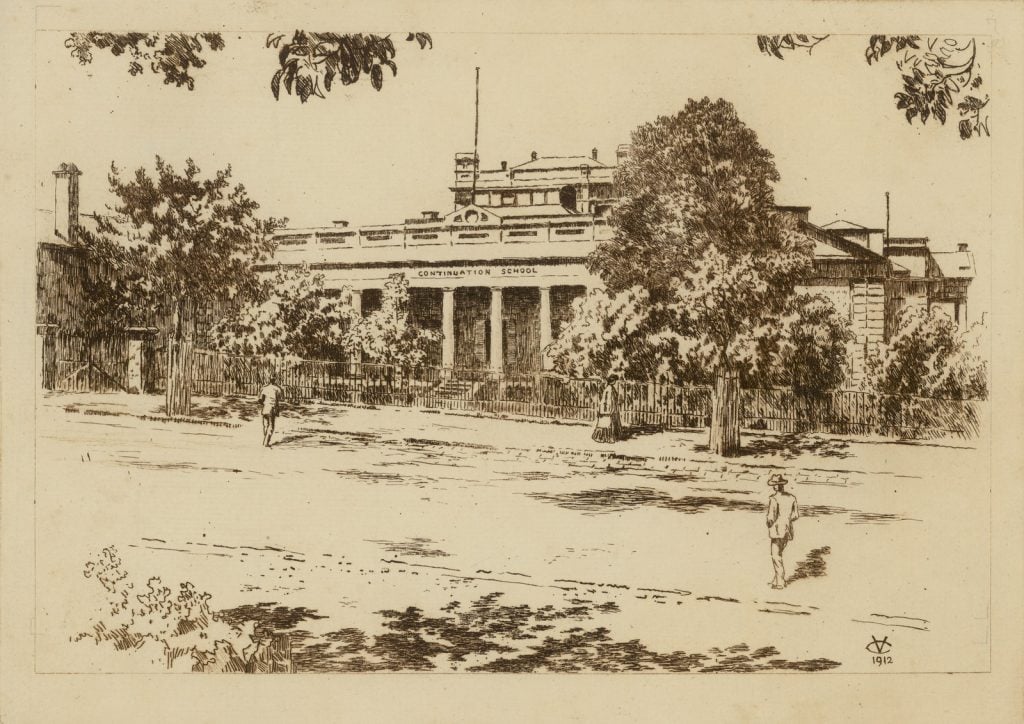
Vision and realisation
The three-volume Vision and realisation : a centenary history of state education in Victoria, edited by L.J. Blake, is the key text on the history of state education and schools in Victoria.7 Volume 2 has histories of schools in the regions of Glenelg, Wimmera, Mallee, Loddon, Central Highlands, Corangamite, Barwon, and Volume 3 focuses on schools in Port Phillip Western, Port Phillip Eastern, Upper Goulburn, Goulburn, Upper Murray, East Gippsland, and West Gippsland.
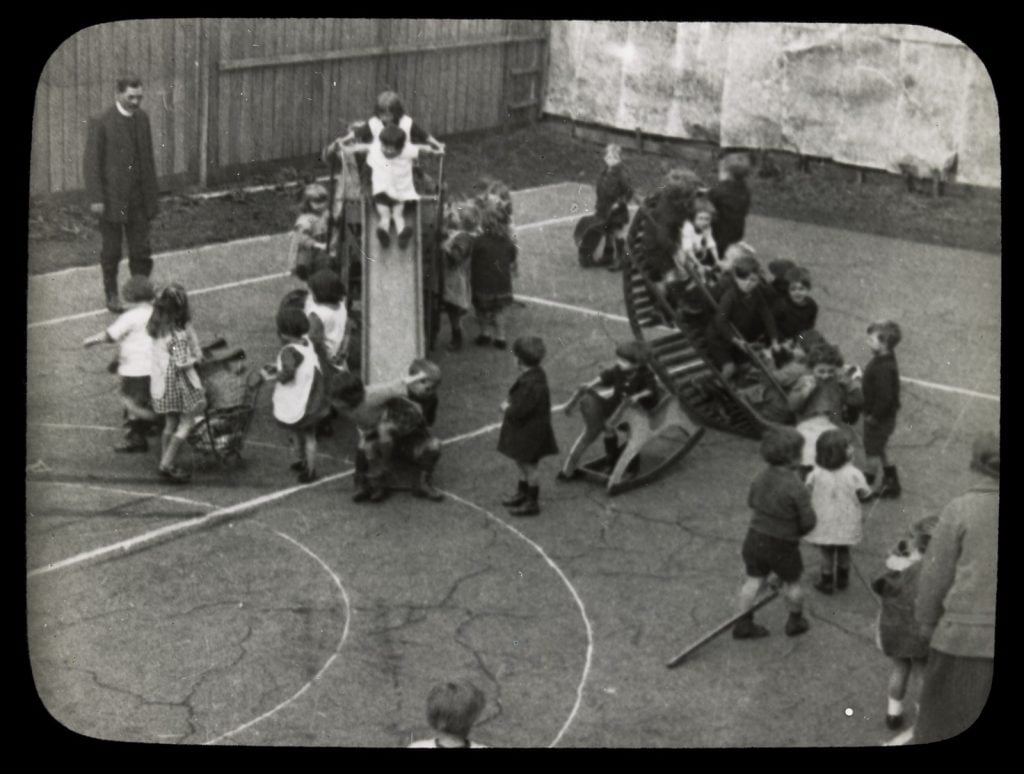
Help with your research
Our School and education history in Victoria research guide with help you to research the history of schools and education in Victoria. We hold many fantastic resources including books, periodicals, images, maps, online databases and indexes which may also assist with your research. We also refer you to other organisations that hold relevant records. Browse through the tabs to locate your area of interest: Get started, Images, Histories, Magazines & year books, Past exams & results, Readers & text books, Term dates, Teachers, School records, Buildings, Education department, Statistics.
You can also contact us via the Ask a Librarian service if you have any questions at all, or need assistance with your research.
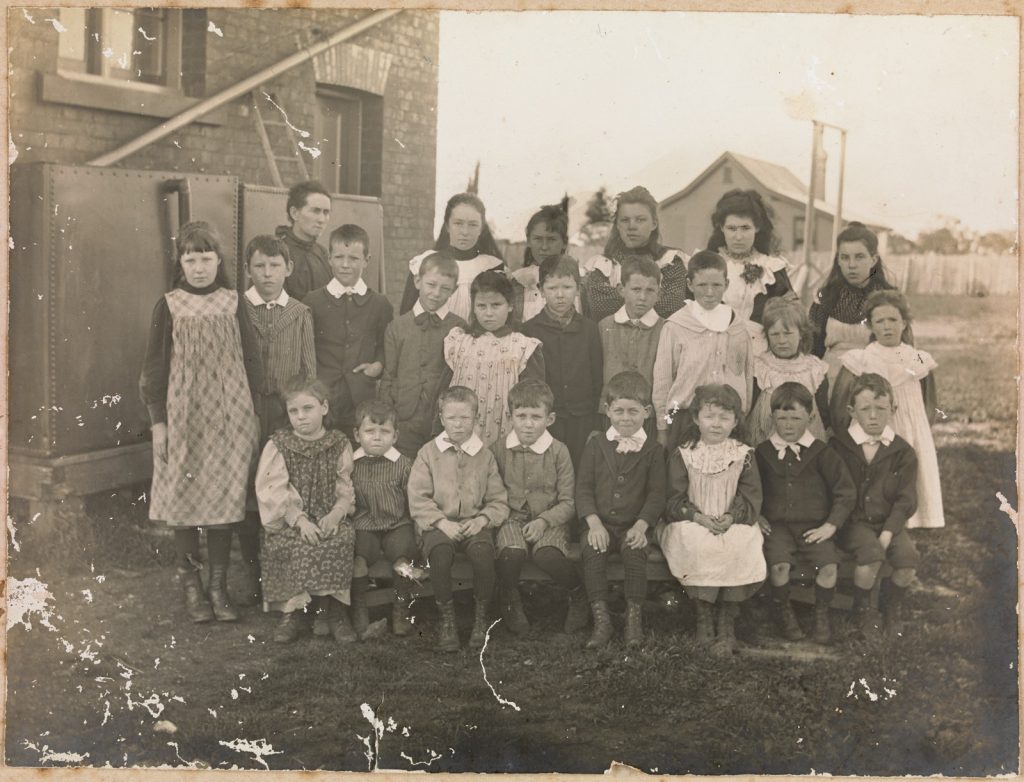
References
- State Government of Victoria, 2022, 150th anniversary of public education, viewed 13 April 2022, <https://www.vic.gov.au/150th-anniversary-public-education-victoria>
- National Museum of Australia, 2021, Defining moments: Free education introduced, National Museum of Australia website, viewed 13 April 2022, <https://www.nma.gov.au/defining-moments/resources/free-education-introduced>
- Reasonable excuses included: (1) That a child is under efficient instruction in some other manner: (2) That the child has been prevented from attending school by sickness, fear of infection, temporary or permanent infirmity, or any unavoidable cause: (3) That there is no State school which the child can attend within a distance of two miles, measured according to the nearest road from the residence of such child : (4) That the child has been educated up to the standard.
- State Government of Victoria, 2022, 150th anniversary of public education, viewed 13 April 2022, <https://www.vic.gov.au/150th-anniversary-public-education-victoria>
- EMelbourne, 2008, Education, access secondary, viewed 13 April 2022, <https://www.emelbourne.net.au/biogs/EM00509b.htm>
- The Continuation School was Victoria’s first secondary school, opened 1905 for girls and boys; housed in the National Model School, Spring Street; boys moved in 1927 to Forrest Street, South Yarra and renamed Melbourne Boys’ High School; girls (then renamed Melbourne Girls’ High School) moved first to Government House, then King Street and finally to Albert Park in 1934, taking the name MacRoberston Girls’ High School.
- For more recent histories of schooling in Victoria see our Histories tab on our School and education history in Victoria research guide



My GG Grandfather joined the Vic Education Dept when it started in 1872.
His name is John Bartley who was a principal and his wife Elizabeth Revell as a teacher.
I’m interested in the first primary schools in Bendigo since it was an established settlement in the early 1850’s
Are any still operating on the same site? Eg Camp Hill or Golden Square?
When was Swan Hill 1142 established?
Hi Gillian, thank you for your questions. I have lodged them with our Ask a Librarian service and one of our librarians will be in touch. Kind regards, Kylie
The Board of Education was formed from the amalgamation of the National Schools Board and the Denominational Schools Board in 1862.
Thank you for the historic background on our Education System. What a fabulous legacy of development and opportunity, compulsory education continues to bring to Australia’s people.
So pleased to see Education
I have tried many times to find school records for my grandmother and my mother however every avenue I have tried has been to no avail
so hopefully you maybe able to assist
Kind regards Colleen
Hello Colleen, please complete our Ask a Librarian form via our website (via the Send us your question button on this page: https://www.slv.vic.gov.au/interact-us/ask-librarian) and include any details about your grandmother, and mother that will aid our search, (eg. full names, maiden names, date of birth, which schools they attended, where they lived) – a librarian will pick up your question and see what we can find. Kind regards, Kylie
Hi Kylie. I have my Bellaire No. 4873 primary school exercise books from the 1960′- spelling, arithmetic, social studies, health, anthology, english… They are in good condition.Wondering if they are of interest to you. Kind regards Julie
Hi Kylie. I have my Bellaire No. 4873 primary school exercise books from the 1960′- spelling, arithmetic, social studies, health, anthology, english… They are in good condition.Wondering if they are of interest to you. Kind regards Julie
Hi Julie, Kylie is away at the moment so I am answering on her behalf. If you would like to offer these books to the Library, please complete our online form, and one of our collection managers will get back to you. Thanks so much for thinking of us! Sarah